8.1 Physical Weathering
Intrusive igneous rocks form at depths of 100s of metres to 10s of kilometres. Most metamorphic rocks are formed at depths of kilometres to 10s of kilometres. Sediments are turned into sedimentary rocks only when they’re buried by other sediments to depths in excess of several 100s of metres. Weathering can’t happen until these rocks are revealed at Earth’s surface by uplift and the erosion of overlying materials. Once the rock is exposed at the surface as an outcrop, weathering begins.
The agents of physical weathering can be broadly classified into two groups: those that cause the outer layers of a rock to expand, and those that act like wedges to force the rock apart.
Physical Weathering By Expansion
Some processes at Earth’s surface can cause a thin outer layer of a rock to expand. Deeper than the thin outer layer, the rock does not expand. The difference is accommodated by a crack developing between the outer and inner layers, breaking the outer layer off in slabs (Figures 8.2 and 8.3). When layers break off a rock in slabs or sheets, it is referred to as exfoliation. Granite tends to exfoliate parallel to the exposed surface because it doesn’t have pre-existing planes of weakness to determine how it breaks. In contrast, sedimentary rocks tend to exfoliate along the contacts between different sedimentary layers, and metamorphic rocks tend to exfoliate parallel to aligned minerals.
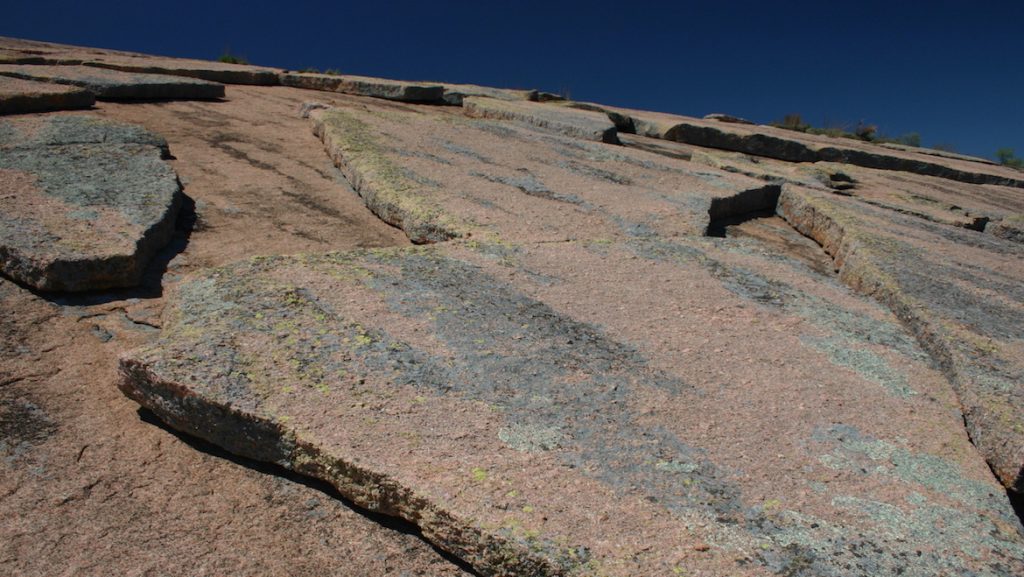
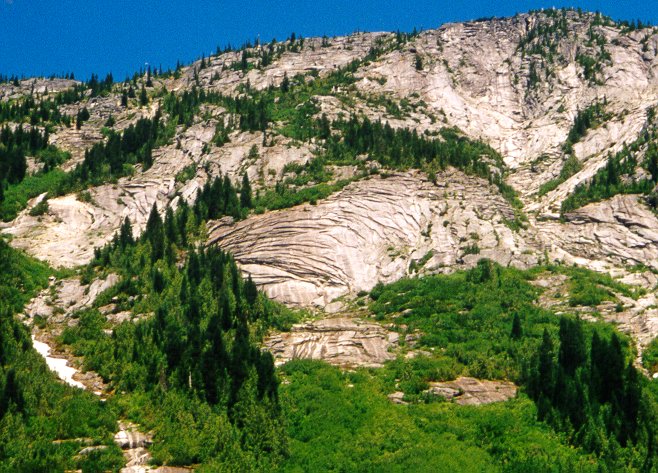
Why Do Rocks Expand?
A rock within the Earth has pressure exerted upon it by other rocks sitting above it. This is called confining pressure. When the overlying mass is removed by weathering, the confining pressure decreases, allowing the rock to expand. The cracking that results is sometimes called pressure-release cracking.
Heating a rock can also cause it to expand. If the rock is heated rapidly, as during a wildfire, cracks can form. If it goes through large daily temperature swings (e.g., in the desert where it’s very hot during the day but cold at night), cracking can also eventually result as the rock is weakened.
Physical Weathering by Wedging
In wedging, a pre-existing crack in a rock is made larger by forcing it open.
Frost Wedging
Frost wedging (or ice wedging) happens when water seeps into cracks, then expands upon freezing. The expansion enlarges the cracks (Figure 8.4). The effectiveness of frost wedging depends on how often freezing and thawing occur. Frost wedging won’t be as important in warm areas where freezing is infrequent, in very cold areas where thawing is infrequent, or in very dry areas, where there is little water to seep into cracks.
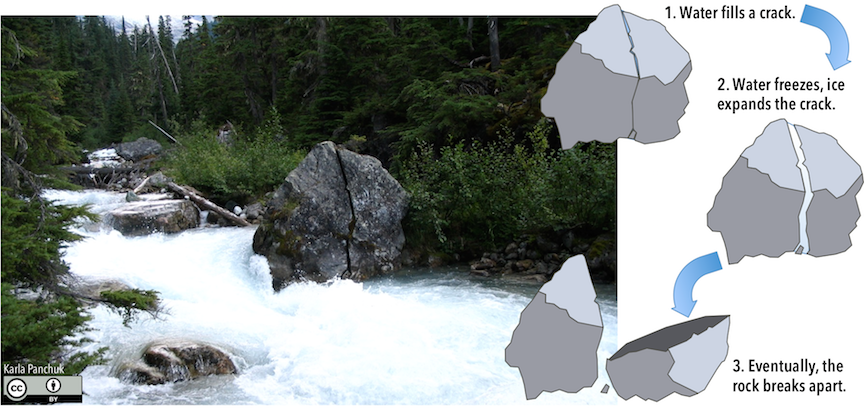
Frost wedging is most effective in climates where for at least part of the year, temperatures swing between warm and freezing. In many parts of Canada, the temperature swings between freezing at night and thawing in the day tens to hundreds of times a year. Even in warm coastal areas of southern British Columbia, freezing and thawing transitions are common at higher elevations. A common feature in areas where frost wedging is important is a talus slope. It’s a fan-shaped deposit of fragments that have been popped off of rocks above, and piled up on steep slopes below (Figure 8.5).
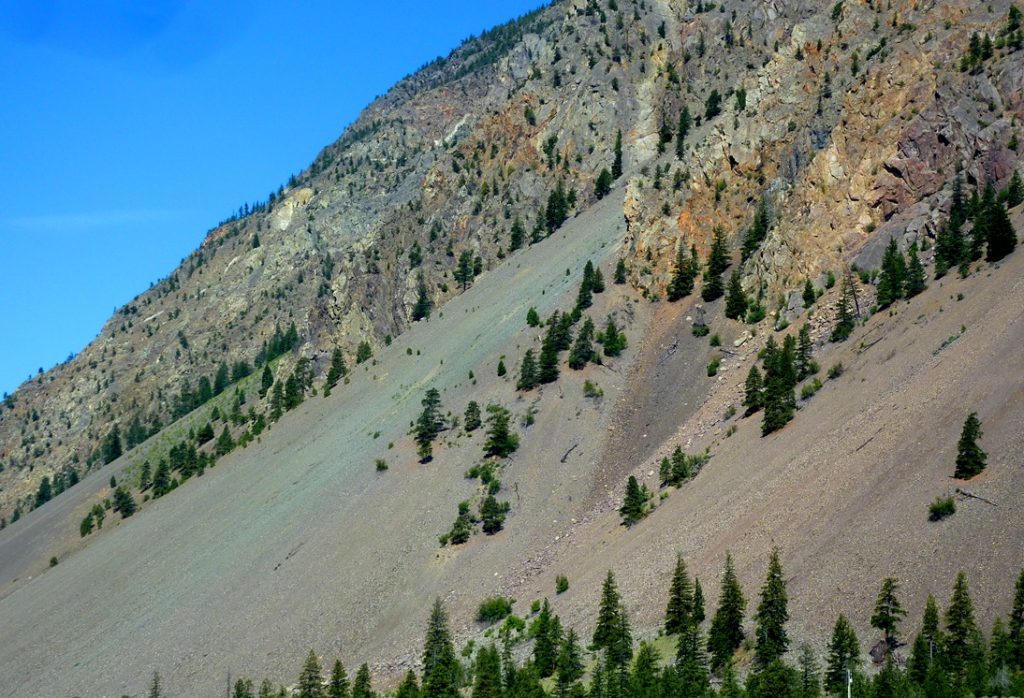
Salt Wedging
Salt wedging happens when saltwater seeps into rocks and then evaporates on a hot sunny day. Salt crystals grow within cracks and pores in the rock, and the growth of these crystals can push grains apart, causing the rock to weaken and break. There are many examples of this on the rocky shorelines of Vancouver Island and the Gulf Islands, where sandstone outcrops are common and salty seawater is readily available (Figure 8.6). The honeycomb structure of rounded holes, called tafoni, is related to the original roughness of the surface. Low spots collect salt water, causing the effect to be accentuated around existing holes.
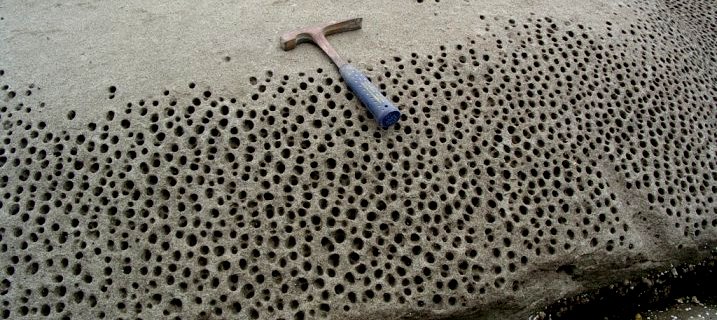
Plant and Animal Activity
The effects of plants are significant in mechanical weathering. Roots can force their way into even the tiniest cracks. They exert tremendous pressure on the rocks as they grow, widening the cracks and breaking the rock. This is called root wedging (Figure 8.7).
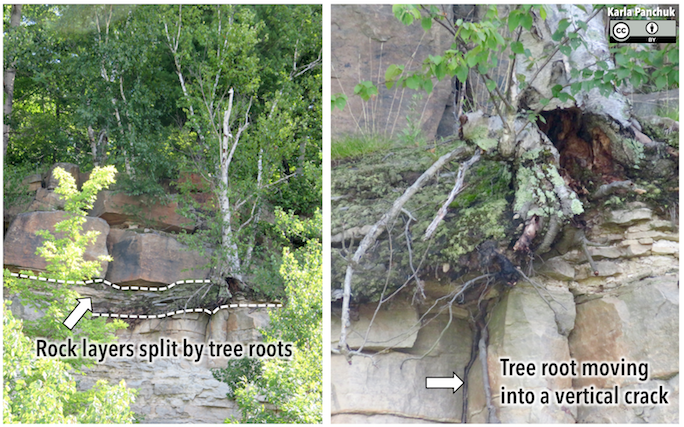
Animals can excavate and remove huge volumes of soil, and thus expose the rock to weathering by other mechanisms. Humans modify vast tracts of land by excavation, and have a profound effect on accelerating physical weathering.
Practice with Types of Physical Weathering
Fill in the missing words in these definitions.
is a physical weathering process where (hint: expansion or shrinking) of rock causes outer layers to break off. It is sometimes caused by (hint: increasing or decreasing) the pressure on a rock. Sometimes it’s because of rapid changes in (hint: what happens in the desert?).
is a physical weathering process where existing cracks in rock are forced wider. Trees can do this with their . It can also happen when crystals of ice or form (hint: derived from evaporating sea water).
To check your answers, navigate to the below link to view the interactive version of this activity.
Now that you’re warmed up, try this:
- Name the physical weathering. (Hint: When this process is complete, how will this rock come apart?)
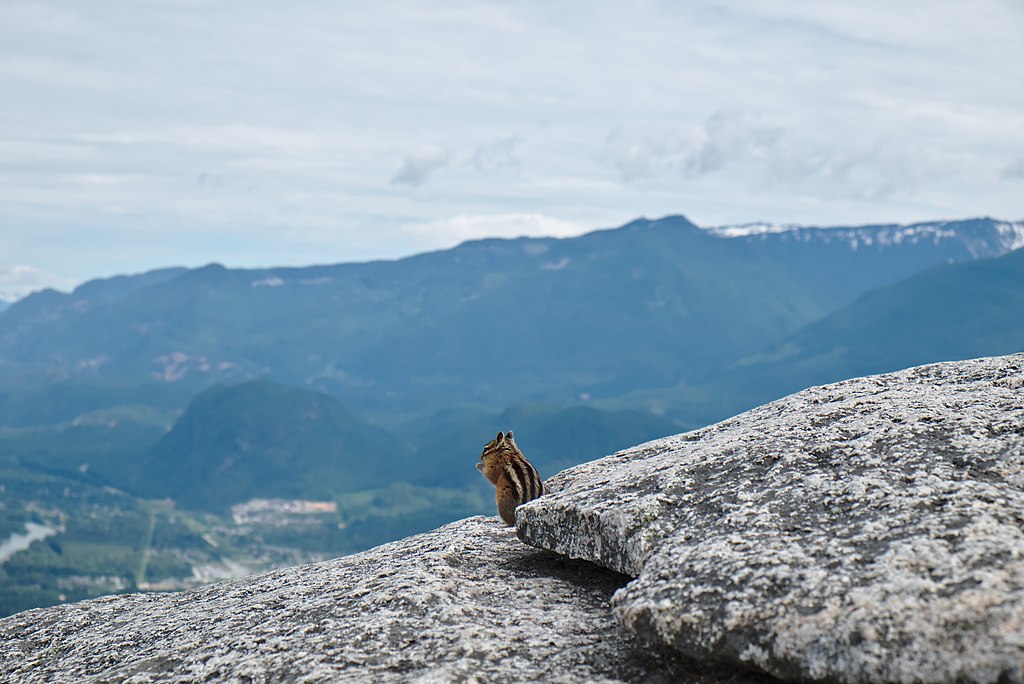 Need help finding the weathering? See below:
Need help finding the weathering? See below: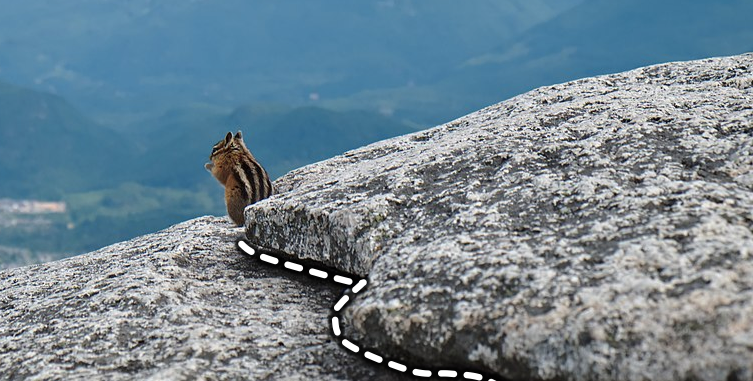
- These trees are growing in cracks along the cliff face. This type of physical weathering is . (Hint: There are different kinds of this type of weathering. Make sure you’re specific.)

- Slabs are coming off of this cliff without the help of trees. What kind of physical weathering is responsible? (Hint: Where does the water from precipitation go?)
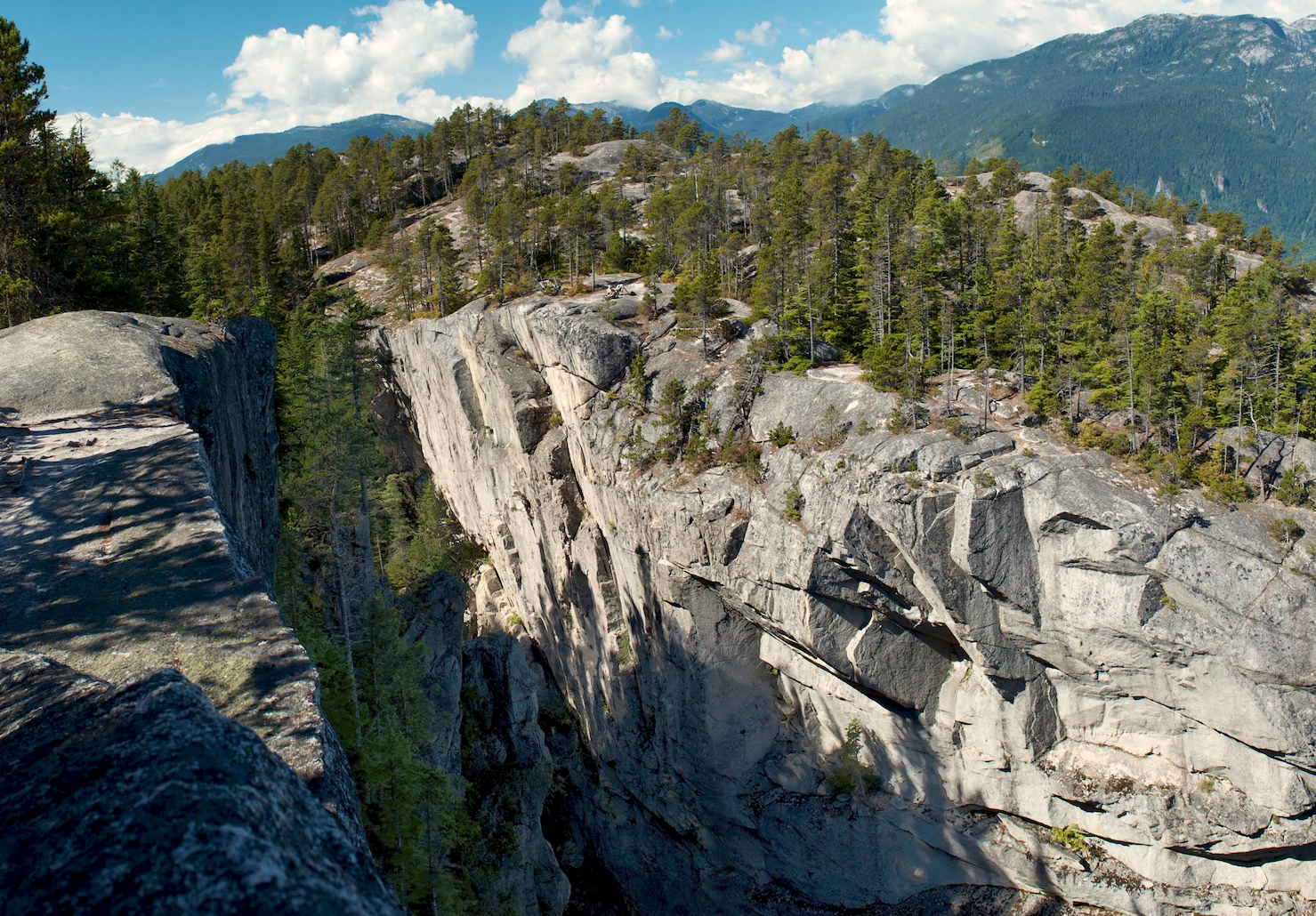 Need a closer look? See below:
Need a closer look? See below: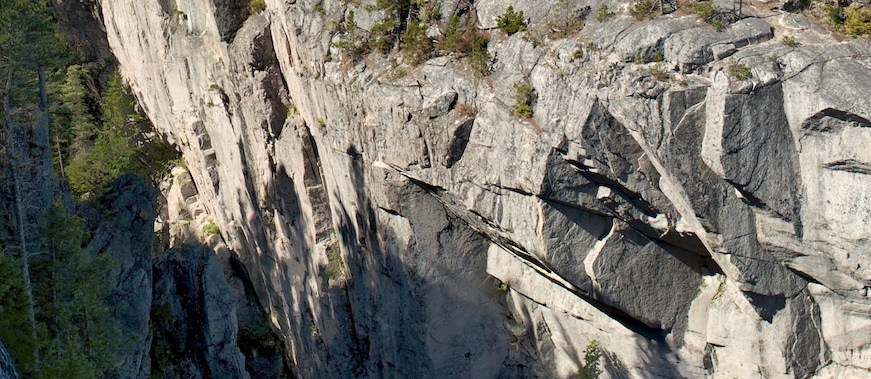
To check your answers, navigate to the below link to view the interactive version of this activity.
Erosion
Physical weathering is greatly facilitated by erosion. Erosion is the removal of weathering products, such as fragments of rock. This exposes more rock to weathering, accelerating the process. A good example of weathering and erosion working together is the talus shown in Figure 8.5. The rock fragments forming the talus piles were broken off the steep rock faces at the top of the cliff by ice wedging, and then removed by gravity.
Gravity doesn’t always work alone to remove weathering products. Other agents of erosion include water in streams, ice in glaciers, and waves on coasts.
Concept Check
What’s the difference between erosion and weathering?
breaks down rocks. removes the broken pieces.
Fill-in-the-blank options:
- Weathering
- Erosion
To check your answers, navigate to the below link to view the interactive version of this activity.

